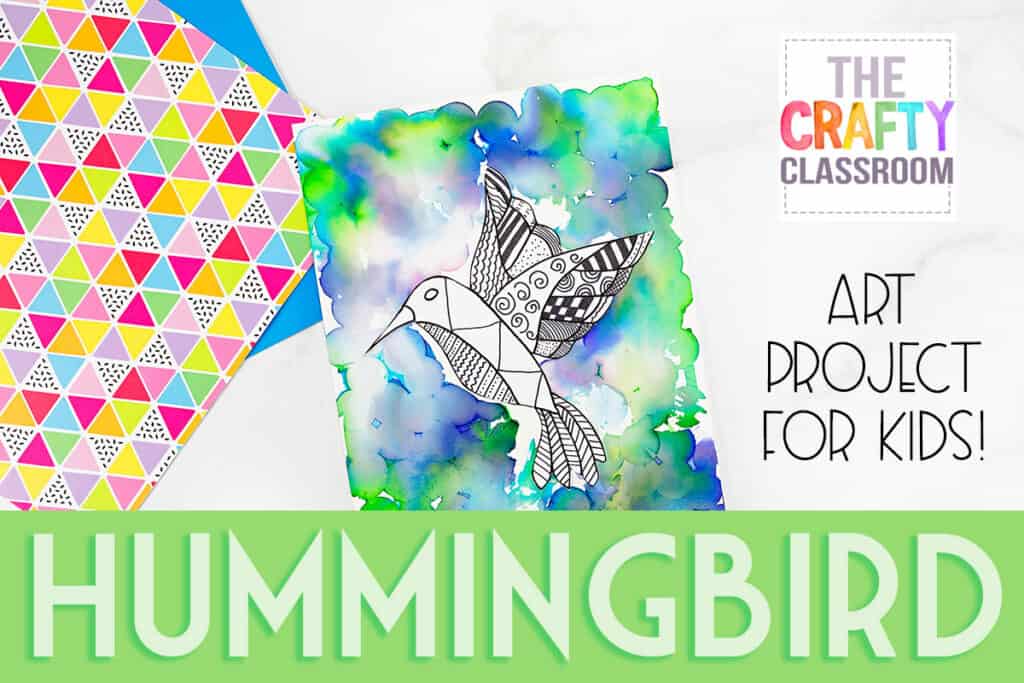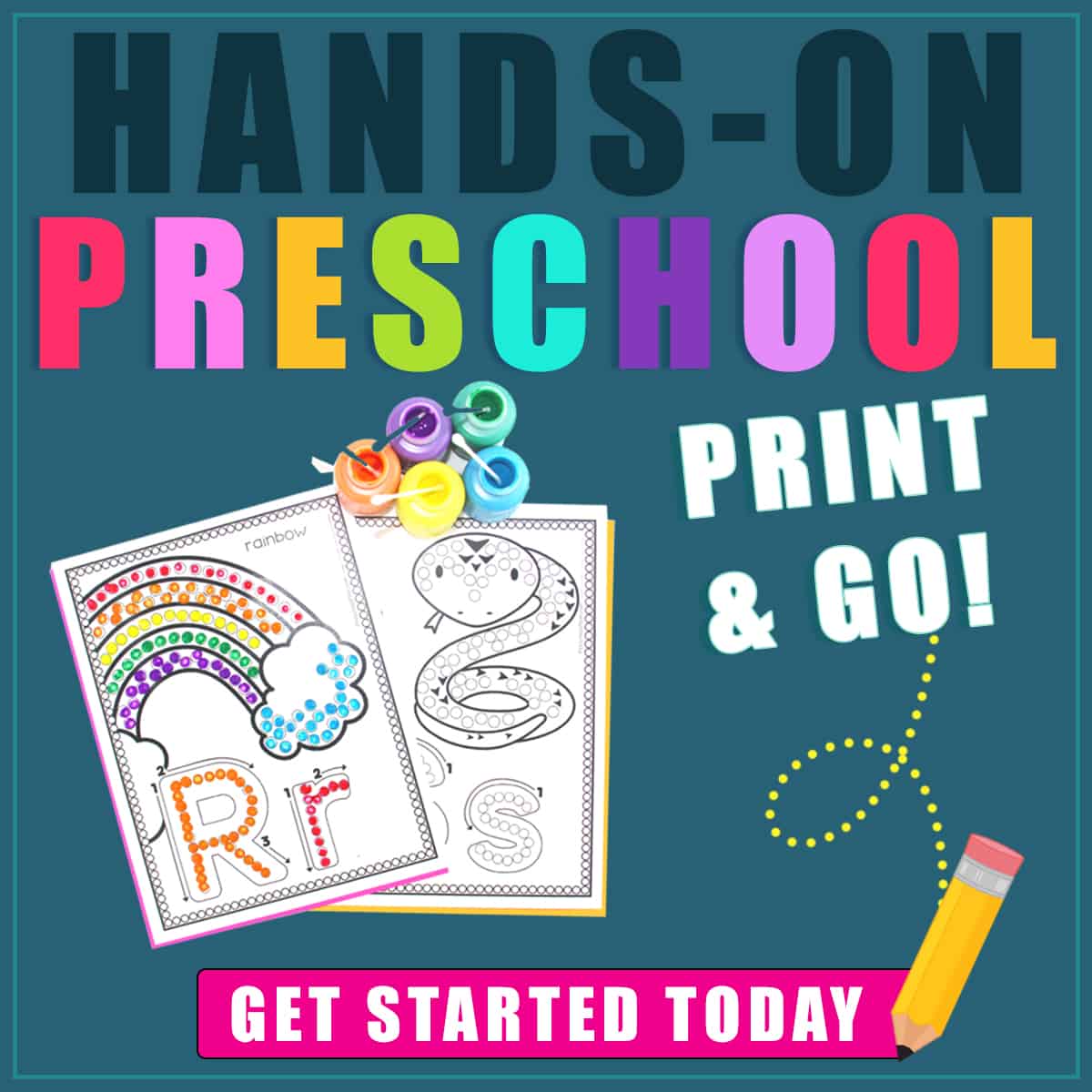
We were lucky enough to not only watch hummingbirds sip nectar at this feeder but also grab a video to share with you. It sparked a desire for a Hummingbird unit study so I pulled together some ideas and we dove into learning about these beautiful tiny creatures, what they eat, how fast they fly, the size of their eggs and nests, and more. Did you know that hummingbirds are the only bird that can fly backward? They are quite the little aerial gymnasts!

Hummingbird Eggs/Nest Craft
Humminbird eggs are roughly the size of a kidney bean, it’s hard to imagine something so tiny! To give the kids a physical idea of what that means we made our own hummingbird eggs and built a tiny little nest to keep them in. It also makes a pretty little handmade display for your nature table or their desk as well.
You will need:
- Air Dry Clay
- Brown string/ Yarn
- School glue
- Bits of moss

Directions:
Roll two small pieces of clay into a small egg shape, use a real bean for reference if you need to.
Set aside and allow them to dry while you construct the nest.

For the nest cut several lengths of brown yarn or string and press them into a small bowl of school glue, be sure to coat them well.

Coil a piece of string covered in glue flat 3 or 4 times, or until its roughly the size of a quarter.
Now start coiling upwards until your nest is roughly ½” tall.

While your glue is still wet tuck bits of moss throughout the nest to make it look even more realistic.
Allow nest to dry completely, it will take at least overnight to harden well.

Research 3 types of hummingbirds and where they are most common.

Hummingbird Nectar
You can buy a ready-made humminbird nectar at the store but it is so simple to make your own that you will want to! Also, while many store-bought nectars are colored red there is really no proof that the nectar itself being red attracts them and red dye is just not good for anyone so we will skip adding any food coloring to ours.
You will need:
- 2 cups of filtered water
- ½ cup granulated sugar

Directions:
- Heat water in the microwave or on the stove, it doesn’t have to be boiling, just very warm to help dissolve your sugar.
- Stir in sugar until dissolved, allow to cool completely.
- Add to your hummingbird feeder, store remainder in the refrigerator.
Hummingbird feeders should be cleaned out and refilled every few days, while they may still drink from it, the sugar water will grow mold easily and that can make them very sick.
Find out how much sugar a hummingbird must consume each day and how far they travel seeking out nectar.

DIY Hummingbird Feeder
You can easily make your own hummingbird feed to attract them to your yard for observation. We are going to upcycle and old spice jar, it is a great choice for this because it already has holes for them to feed on, and if you use a certain brand then they have red lids and red is one of the hummingbirds favorite colors.

You will need:
- A clean spice jar (red lid if possible)
- string/yarn
- Silk flowers
- Twig or popsicle stick
Directions:
Clean out jar very well- soak in vinegar for a while, rinse, and dry thoroughly.

Remove lid and cut off the flip-top portion, use a nail file to smooth the rough edge.
Use a strong tacky glue to secure a twig or popsicle stick to one side of the jar, be sure not to attach it to the lid with holes so this can be removed.

Glue flowers all the way around your plastic jar if you like to decorate it and help attract hummingbirds (and butterflies) to your yard.
Wrap a long piece of yarn around the neck of the bottle.

Fill with hummingbird nectar and replace the lid.
Hang in a tree where you can keep an eye on it.

You’ll enjoy all your new friendly visitors! Just be sure to change the sugar water every couple of days to keep it fresh. Old sugar water can grow mold which is harmful to little hummingbirds, so do take care of your new friends.
Hummingbird Nature Journal

Fun Facts
- The average weight of a hummingbird is less than that of a nickel.
- Hummingbirds have no sense of smell, rather they are attracted to red and orange flowers.
- There are over 330 species of hummingbirds in North and South America.
- While flying, their hearts beat an average of 1200 beats per minute. 250 at rest.
- They are able to reach speeds of 30mph during forward flight.
- Hummingbird wings beat between 50 and 200 times per minute.

Hummingbird Zentangle Art Project: This is a great art project for elementary students! Children create their own designs on our free hummingbird template. Then, using bleeding tissue paper, they create a stunning background.
Hummingbird Art Project for Kids

Learning about hummingbirds can make a fantastic unit study for your homeschool classroom. Especially if you time your studies up with Spring & Summer when hummingbirds are likely to be out and about. Besides nature journaling, you might consider making some beautiful window art so you can enjoy hummingbirds year-round. Click Here for a full art tutorial!
Hummingbird Science Worksheets

We’ve created a variety of free hummingbird worksheets you can use to put together a simple science journal with your students. You’ll find hummingbird coloring pages, parts of a hummingbird labeling worksheet, fun facts, Montessori cards and more! Click Here for Hummingbird Printables.
Hummingbird Books for Kids:
Use the following hummingbird vocabulary for spelling and vocabulary words, create your own crosswords
- Nectar
- Aggressive
- Hover
- Territorial
- Species
- Migratory
- Pollination
- Nutrients
- Metabolism
- Aerodynamics
- Foraging
- Gorget
Have a suggestion for our Hummingbird Unit Study? Leave a comment below! Looking for more Birding Fun? Try our USA 50 State Birds Activity Pack.






Leave a Reply